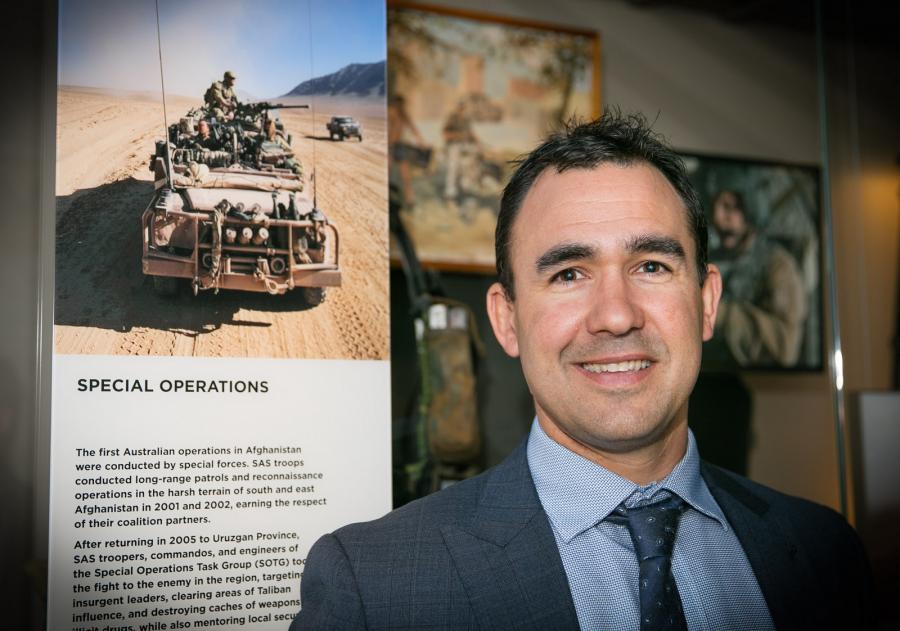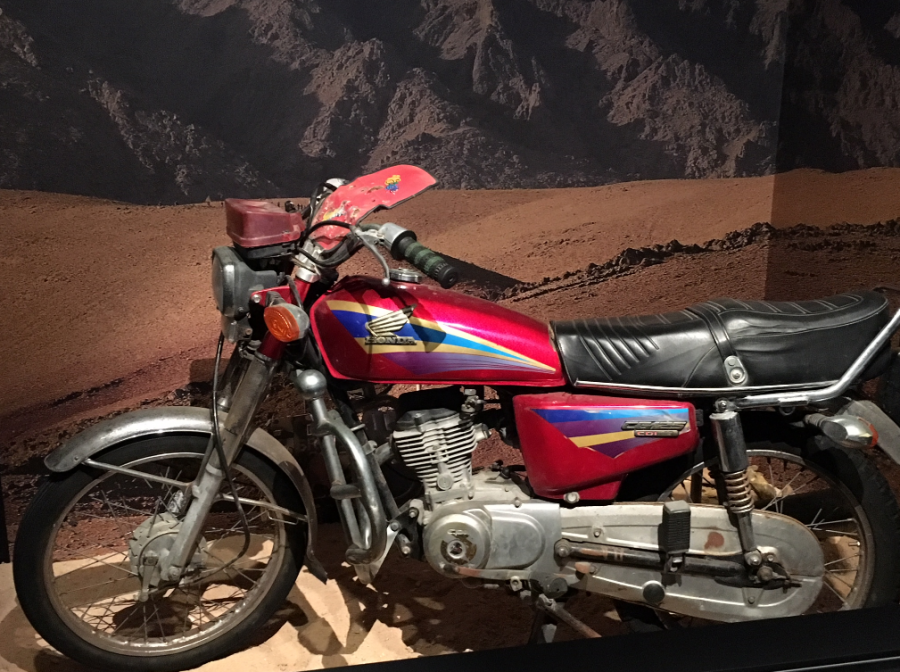'I thought, this is it, I’m going to die'

Dave Farrell: "I had all these thoughts go through my head ... and to be completely honest, I was petrified."
When Special Forces soldier Dave Farrell’s patrol was ambushed during his first rotation to Afghanistan, he thought he was going to die.
“We got down behind some rocks and the rounds were coming in all around us and I thought, I actually thought, this is it, I’m going to die,” Farrell said.
“I’m going to die in the desert of Afghanistan. I’ve only been here a couple of weeks, this is no good. I’m not going to get to say goodbye to anyone. I had all these thoughts go through my head very, very quickly and to be completely honest, I was petrified …
“There was one guy with a rocket propelled grenade and another guy loading it so that they just kept impacting every 20 or 30 seconds. And there were one or two guys with machine-guns and maybe one other guy with a standard AK-47 firing at our position.”
Retrieving an 84mm rocket launcher from his long-range patrol vehicle, Farrell was exposed to the enemy four times.
“I set on an airburst which means when it gets to a set distance the round will self-detonate,” Farrell said. “We repeated the process and, at the third time, luckily I got the range right, and … I quickly stood up and fired the rocket and it sailed straight over and went right above the top of their compound and just exploded and dropped off all six of the blokes there.”
Farrell was awarded a Medal for Gallantry for his actions that day. He shares his story in a series of interviews with Special Forces soldiers and their families as part of the ground-breaking new From the shadows: Australia’s Special Forces exhibition at the Australian War Memorial.

SASR Corporal Dave Farrell MG visiting the Memorial.
The 12-month exhibition focuses on the history, capabilities and ongoing work of Australia’s Special Forces, from the Second World War to Afghanistan, and includes nearly 700 objects, many of which are on public display for the first time.
It features objects and stories from the Special Air Service Regiment, the 1st and 2nd Commando Regiments, and the Special Operations Engineer Regiment.
One of the objects on display is a red Honda CG125 which belonged to a Taliban bomb-maker was known as “Rocket Man” by Dutch Forces and code-named “Stiletto” by the Australians.
“Objective Stiletto, he was very hard to catch,” Farrell said.
“He’d been on the run for a long period of time, narrowly escaped capture or death on a couple of occasions … We knew roughly where he’d gone to, so we pulled up about 100 metres away and it was on.
“Everyone jumped out and it was guns blazing, and yeah we got him on that day, so that was an end of an era for Stiletto, and end of an era for teaching people how to make improvised explosive devices, and how to accurately send rockets in on the camp.”
Stiletto had tried to escape on the motorbike.
“The motorbike was there and I thought, I’m taking this,” Farrell said.
“So we strapped it to the side of the vehicle … and took it back to base, and now it’s at the Australian War Memorial.”

The Honda motorbike on display at the Memorial.
Watch the interview with Dave Farrell on the Memorial YouTube channel.